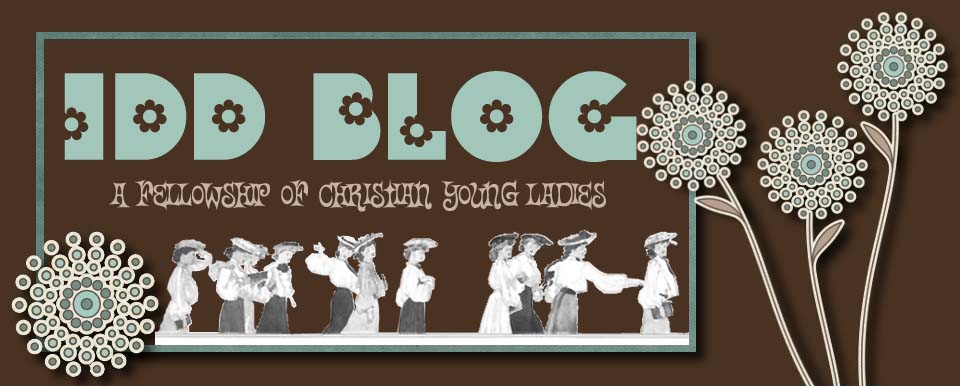How to read a poem, part 1
I’ve noticed that a fair number of my friends, even people who enjoy reading a lot, tend to shy away from poetry. “Oh no,” they say, “it’s too difficult. I don’t like reading it very much.” I, on the other hand, enjoy reading poetry quite a bit. And since I’m an English major I read it often. So I thought I’d give a few tips on reading poetry. Because it’s really not as scary as it sounds.
1. Go [HERE] and print off the poem. Now find a pen or pencil and sit down somewhere quiet with a table or book to write on.
2. Read the whole poem out loud. I know this may sound a little funny, but trust me. It makes a difference.*
3. Now, in the nice white space at the bottom of your paper write down anything you noticed. Don’t read any further until you’ve done that.
Okay. Here are a few things I noticed:
a) the ‘g’ sound is repeated quite a bit throughout the poem
b) there’s a rhythmical, marching feel, especially in the first stanza [if you don’t know what a stanza is, don’t worry—we’ll get to that in a minute]
4. Now take your pen or pencil. We’re going to look at the form of the poem—the way it’s been set up. I happen to already know that this is in a form called a Petrarchan sonnet. But even if you don’t know that, we can figure some things out.
At the end of the first line, put a big ‘A.’ Now look at the next line. Does it rhyme with the first? No, it ends with ‘foil.’ So put a big ‘B’ at the end of the second line. Now look at the third line. Does it rhyme with either of the two so far? Yes! It rhymes with the second line. So put a big ‘B’ at the end of that line as well. Keep going through the poem, putting a new letter whenever a new rhyme appears.
After you’re done, you should end up with these letters:
A
B
B
A
A
B
B
A
C
D
C
D
C
D
Can you draw any conclusions from them?
Here’s what I thought of:
a) the poem is divided into two sections—these are called ‘stanzas’ †
b) in the first section, the same rhyme pattern‡ is repeated twice
So my conclusion is that the two sections will have different thoughts in them—otherwise why would they be divided? And in the first section, there will be two thoughts again, but they will be related (because they have the same rhyme pattern).
5. Now, read the first line again. Just the first line. Take your pen or pencil and write down any thoughts you have. Circle words if you think they’re interesting. Do the same thing for all fourteen lines. If you need to look something up in the dictionary, you can. If you want to read it out loud again, you can do that too. If you think two things are connected, draw a line between them. Right across the beginning of the page.
6. Look at all of your notes. Some of them might not be important. That’s okay. Usually I have two or three little rabbit trails that are interesting but don’t really have anything to do with what I end up thinking the poem is really trying to say.
Now comes the part that might be a little harder. Looking at your notes and at the poem, try to figure out what you think the poem is saying. It doesn’t have to be anything really profound. It can just be a paraphrase of the words in each section. That’s a hint there—remember that the poem is written in sections. There are two complete thoughts in the first large section and one complete thought in the second. Try to think of them as a sentence each (in this poem they happen to be a sentence each, which makes things easier).
Another tip: try to find the key words. What seems to be important here? I came up with a few—nature, God, man, the world. Can you think of any more?
Tip 3: a poem isn’t necessarily going to say exactly the same thing the whole way through. In fact, usually the poet changes his or her mind part of the way through. So if one section seems to say one thing and another section seems to say another, don’t be frustrated. That’s probably part of the poem.
I’m going to stop here for this week. Next week I’ll tell you what I think the poem is trying to say. Please, leave your ideas in the comment section! And if you have any questions, you can leave those in the comments as well. I’ll try to answer them either there or in my next post.
* Most poetry is designed to be read out loud and therefore you miss things if you don’t. This is less true for certain poems and forms of poetry but in general it is a good principle.
† There, wasn’t that easy?
‡ If you wanted to be fancy about it, you could use the technical term and call it a 'rhyme scheme.'








5 comments:
Maureen, this is an excellent article! I can't wait to read next week's! I LOVE the sound of poetry but I'm one of those people that gets discouraged if I don't understand it the first time through... THANK YOU!
This is really good, Maureen. I'm the type that gets confuzzled by the complex sentences that is often used in poetry, and can't figure out what they are trying to say the first time through. I don't have a printer for my lap-top, but sometime I want to try doing what you suggest here.
I JUST learned how to read poetry earlier this year, It's so much fun!
and it's so amazingly complex. I can't believe people are able to write it :)
Thanks, Maureen! I love how you've broken it down for us!!!
Becca, don't get discouraged. Every English teacher I've ever had has told us that you have to read a poem more than once to understand it.
Lady Dvora, it is so much fun! I love discovering new layers of meaning in my favorite poems.
Some time I'll have to scan a page from one of my poetry anthologies.
Post a Comment